Review and images by bmathison1972, edited by Suspsy
Opabinia regalis is an enigmatic arthropod (or arthropod-like animal) from the Middle Cambrian Burgess Shale Lagerstätte of present-day British Columbia. It was a benthic predator, scouring the bottom of the Cambrian Seas for soft-bodied prey nearly 505 million years ago. The phylogenetic relationships of O. regalis are far from resolved. Historically, it has been considered an anostracan crustacean, a ‘trilobitoid,’ a radiodont (Anomalocaris and kin), a cycloneuralian worm, and a true arthropod, among others. Currently, it is considered a stem-arthropod, within Panarthropoda but outside Euarthropoda, and probably sister group to Radiodonta. Opabinia regalis has had some representation in toy/figure form, especially since 2000, with examples by Royal Ontario Museum (2000), Kaiyodo (2001, 2015), COG Ltd. (2008), Innovative Kids (2009), Favorite Co. (2015, 2016, 2021), as well as others that I am unaware of, namely 3D printed models, game pieces, and plush toys. Today we will be looking at an example by Trilobiti Design, the model department of Trilobiti, an Italian company that sells actual fossils and makes museum-quality replicas of animals, primarily prehistoric marine critters.
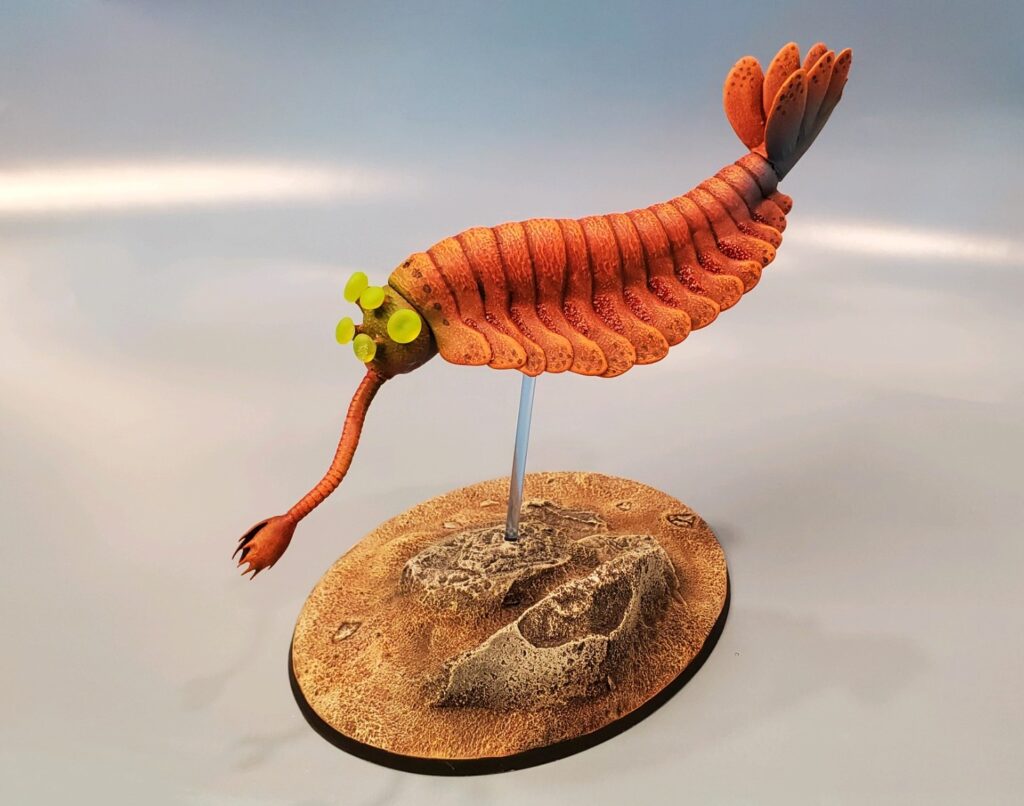
I would first like to give my thanks to Trilobiti for this figure. A few years ago, I ordered a Hallucigenia sparsa figure from that that had some breakage in transit. While I was able to repair the damage, they were nice enough to give me this complimentary copy of O. regalis. If any of you have worked with Trilobiti, you know they excel at customer service.
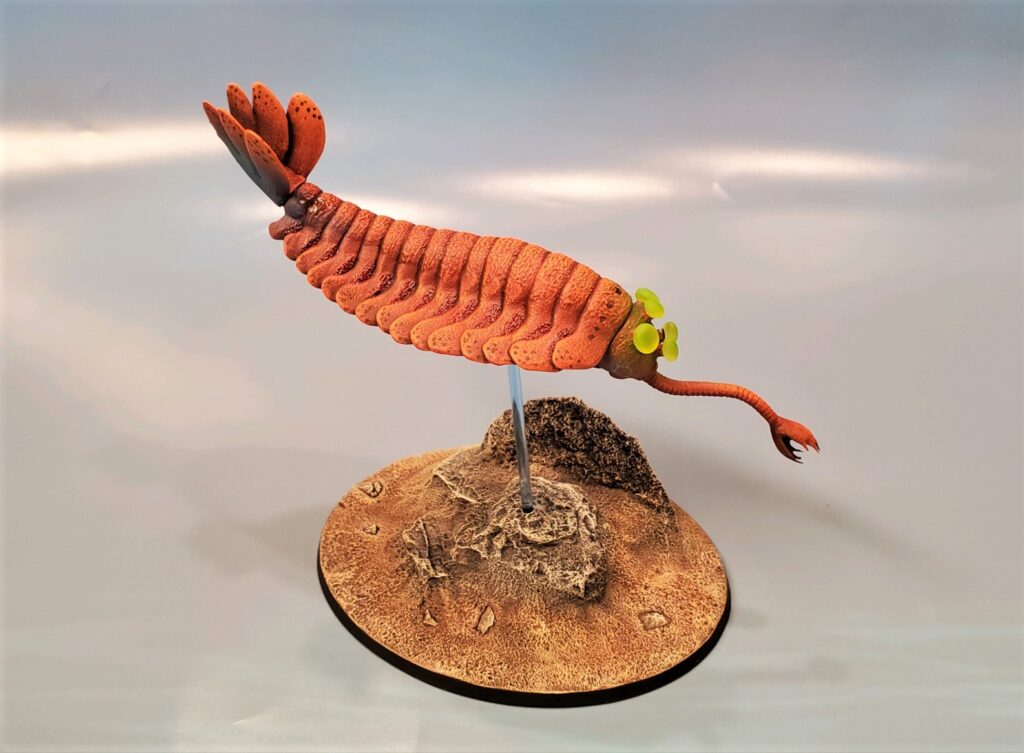
Like all of Trilobiti’s replicas, this is 3D-printed. The body length of the animal (minus appendages) is about 12.0 cm for a scale of 3:1-1.7:1. With the proboscis, the figure is about 16.0 cm long (which is interesting, because if you go to their site, the options are either 9.5 cm or 28.5 cm; I originally ordered the 9.5 version).
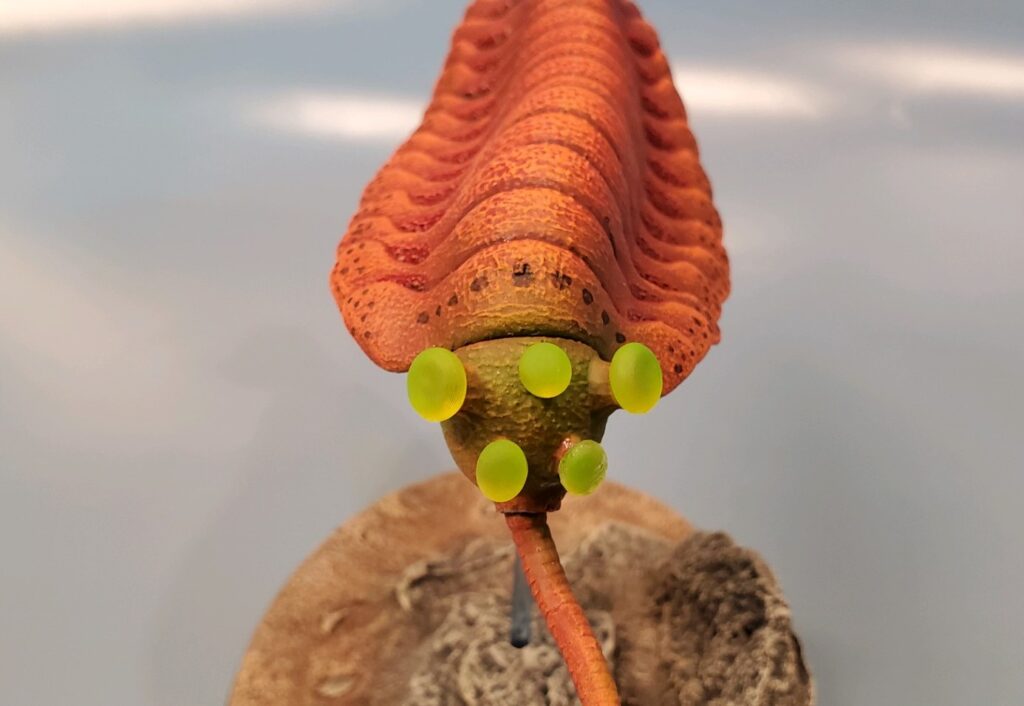
Both sizes of the model come in both painted and unpainted versions; I ordered the painted version as I have no skills to do such a thing myself. The animal is painted in a natural and plausibly realistic color, being brick-red with dark brown spots on the extremities. The eyes, which have the appearance of frosted glass are a translucent green. They eyes are not faceted, but there is no evidence the eyes of O. regalis were analogous to the compound eyes of modern day insects anyway.

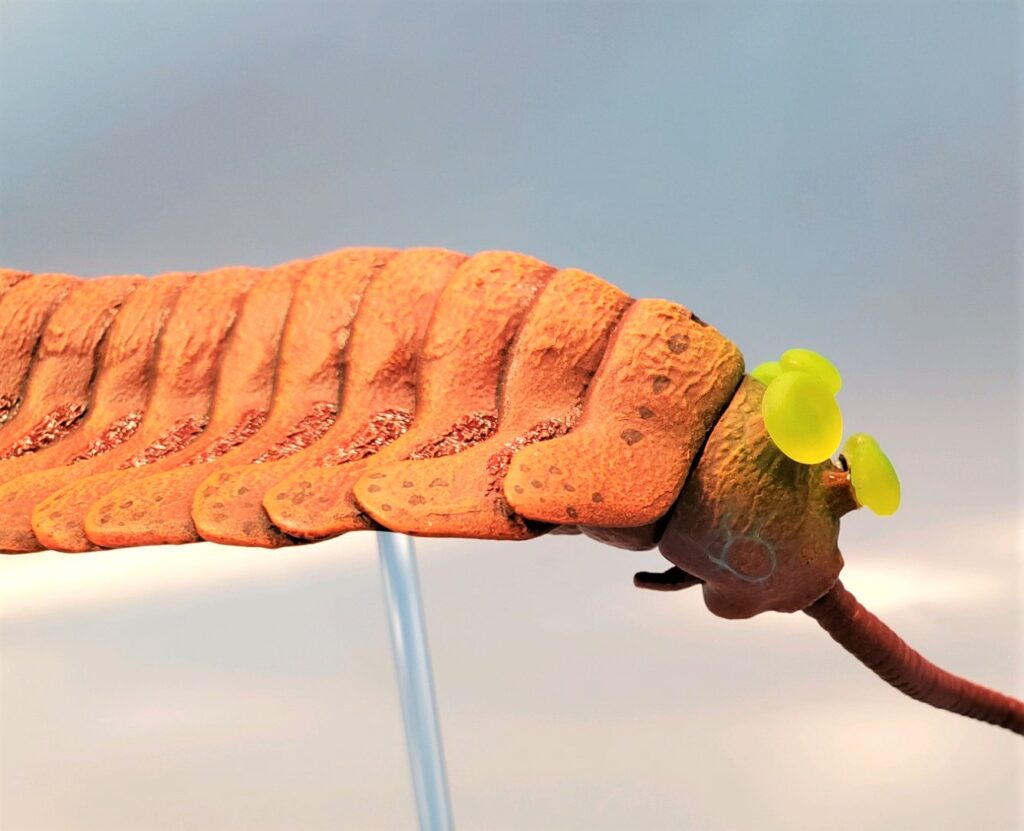
The general morphology is correct for O. regalis: 15 pairs of lateral flaps (which are believed to support gills or lanceolate blades), three caudal flaps, and a pair of terminal spines at the base of the caudal flaps. It has been suggested that O. regalis had biramous limbs and that there might be legs or lobopods under the lateral flaps; however, there is still no direct evidence for this and there is nothing reminiscent of such structures on the underside of the model.
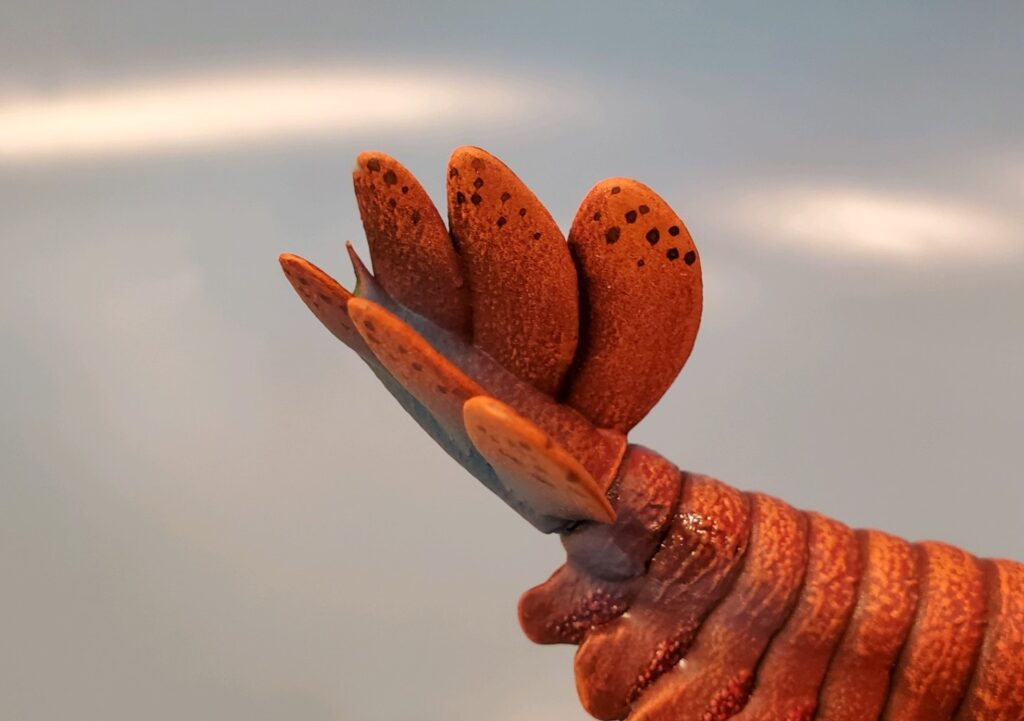

Now let’s look at the proboscis. To prevent breakage during shipping, the folks at Trilobiti decided to make the proboscis a separate structure and have it attach to the head with a small, flat magnet! Ingenious! The proboscis is segmented and terminates in paired claw-like structures, each with five spines (which is accurate). Promotional photos online show the model with the proboscis being held like most reconstructions of O. regalis, with the claws opening top-to-bottom like a beak. However, it is now believed that the proboscis is made up of fused segments, in which case they would open side-to-side (like ant mandibles). Luckily, because of the way the proboscis attaches with a magnet, the collector can orient the proboscis to the current concept (it means the bend in the proboscis would be side-to-side rather than up-and-down, but that’s okay given the assumption that the proboscis was a flexible appendage used for bringing food to the mouth).
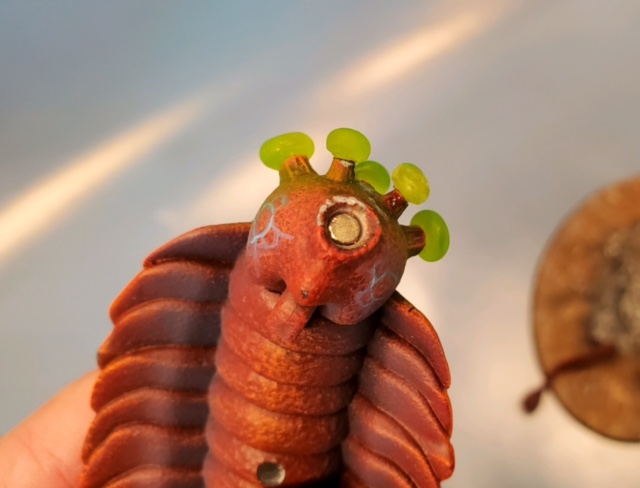
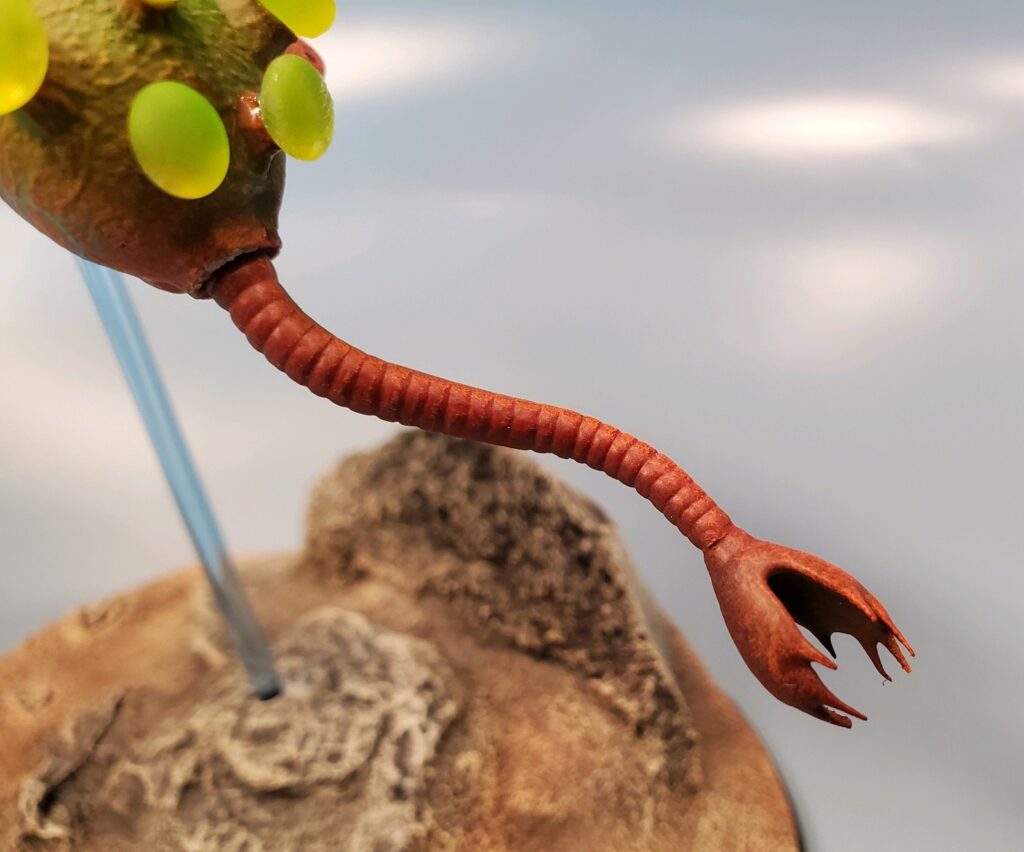
Lastly, the model attached to a habitat-style base. Their website does not show the base, so I am not sure if it comes standard with the model, or they made it for me (when I bought the H. sparsa, they gave me a free base due to delay in processing). As mentioned earlier, Trilobiti has amazing customer service!
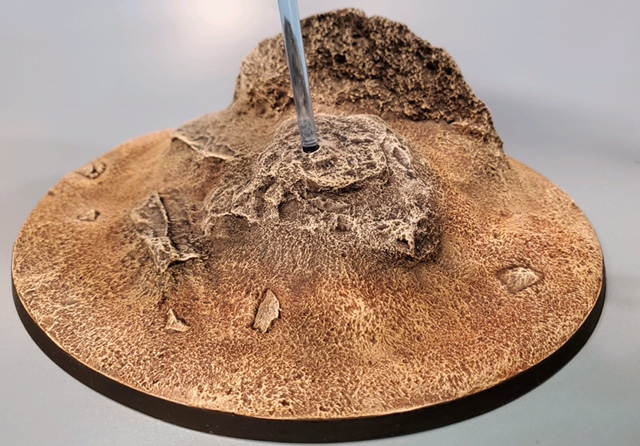
In all, this an amazing reconstruction of Opabinia regalis. This is not a toy; this is a museum-quality model for serious collectors. Because of its size, fragility, and cost, it may not be for everyone. There are plenty of good examples of ‘toy’ O. regalis to choose from (I suggest the small Favorite figure or either Kaiyodo figure). If you are interested in this or similar models, I suggest you check out Trilobiti.
Disclaimer: links to Ebay and Amazon on the DinoToyBlog are affiliate links, so we make a small commission if you use them. Thanks for supporting us!




Wonderful review of this fascinating animal. The model is beautiful and the base well done.
It’s interesting that this critter has gained so much fame.
Great review and what a stunning model of one of my favorite Cambrian period animals, and prehistoric invertebrates. Really lifelike, and I imagine it must have cost a pretty penny. The translucent eyes are also, well, eye catching.
Thanks Gwangi and Suspsy; I might have brain farted and made an error; this might be cast resin, not 3D printed; I have emailed the folks at Trilobiti to ask for confirmation. I’ll let you know what they say 🙂
My guess is that it was designed digitally, printed, and then the print was sanded/refined and casts were made of that copy.
I enjoyed your review and can also attest that Trilobiti is great to work with!
Just heard back from Trilobiti; you are correct 🙂
Great to see you here on the DTB from time-to-time. Opabinia is one of my favorite Cambrian critters.
Opabinia is such a magnificent creature, truly a marvel of evolution. I don’t know why CollectA and Safari and Schleich and other companies don’t tackle it.